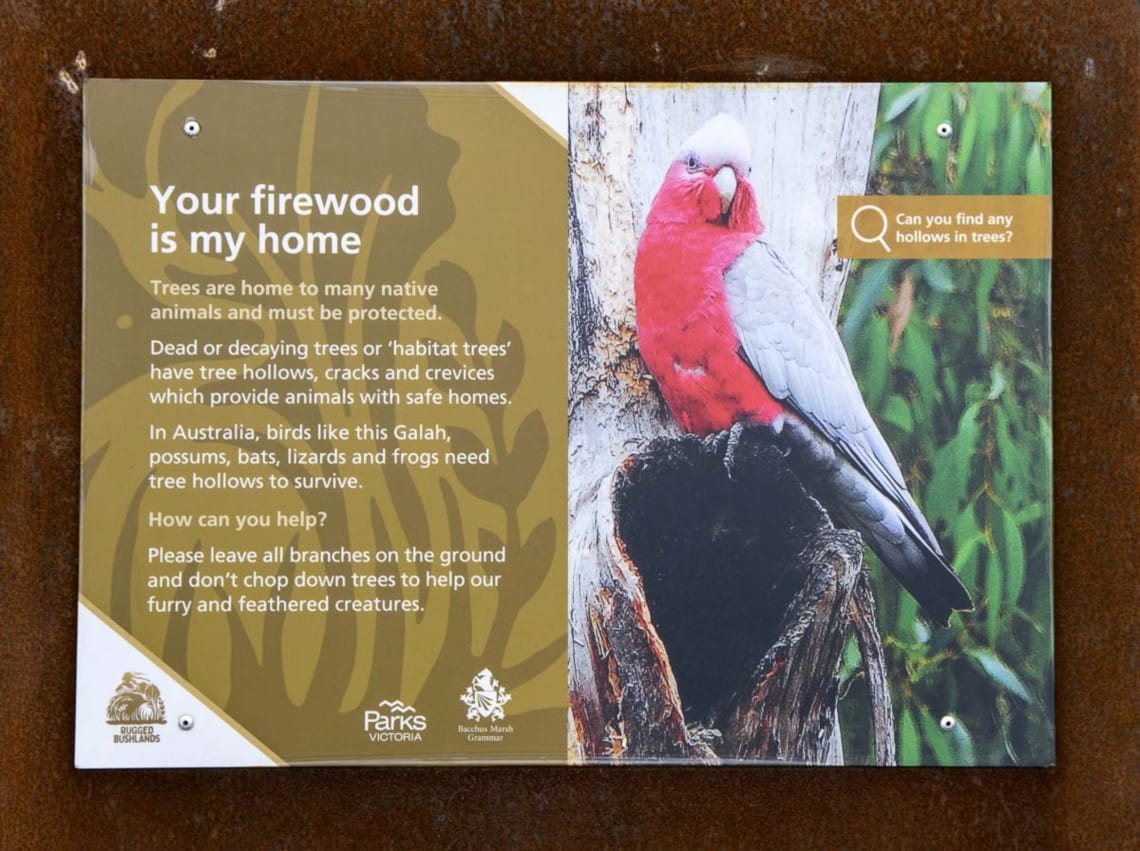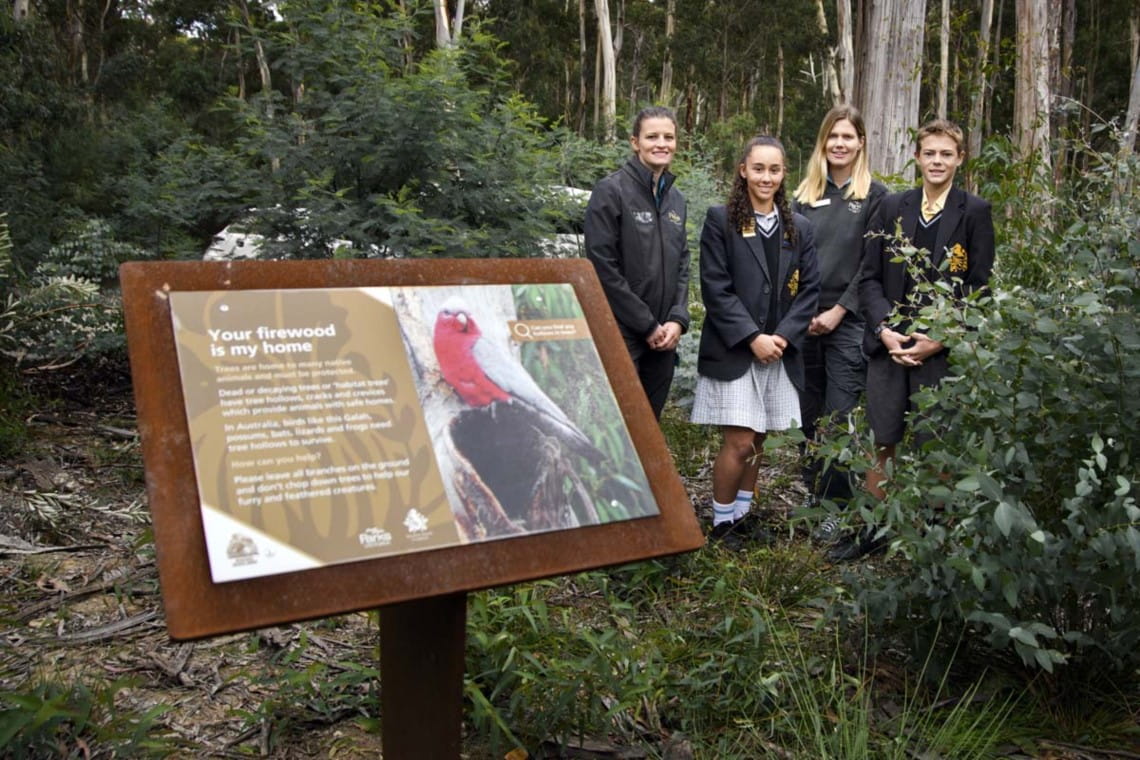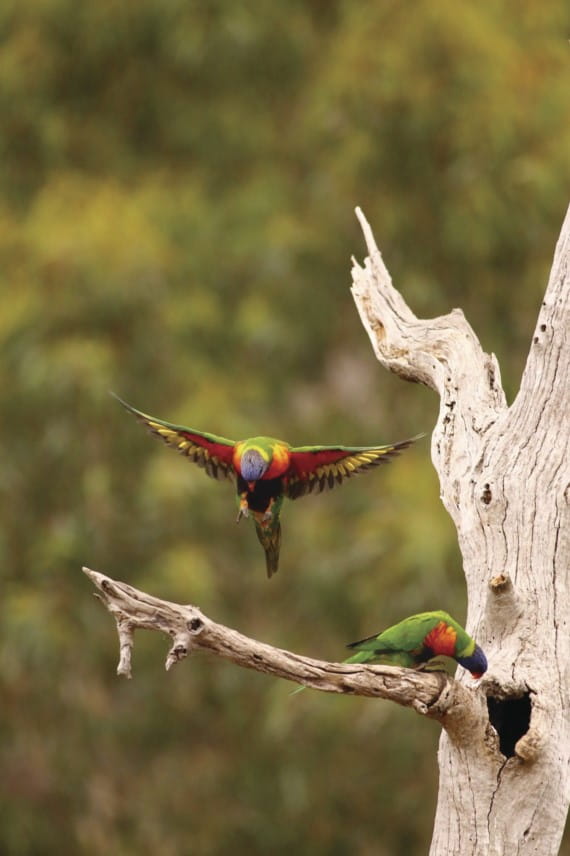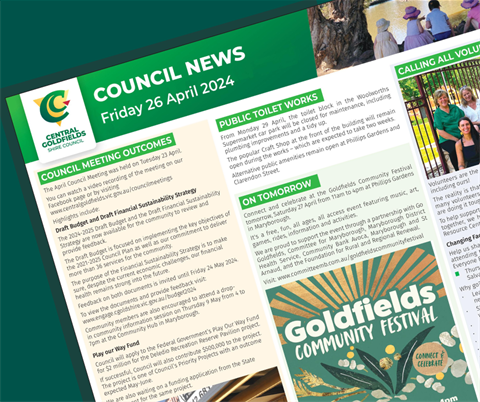Vital habitat trees for native species in Lerderderg and the Brisbane Ranges will be protected thanks to new signs designed by Bacchus Marsh Grammar students.
The signs were officially launched at Lerderderg State Park earlier this month with students and staff from Parks Victoria, Department of Land, Water and Environment (DELWP) in attendance.
Habitat trees are trees with hollows, cracks and cervices which provide important shelter, breeding locations and food supply for native wildlife species. Over 300 species of wildlife use tree hollows across Australia.
In an ongoing approach to safety, Parks Victoria and DELWP completed a tree risk assessment at Lerderderg State Park and Brisbane Ranges National Park which found trees presenting a risk to visitors, due to age, decay, or falling limbs.
Parks Victoria and DELWP turned as many of the unsafe trees as possible into habitat by cutting, pruning, and carving.
Some trees were cut to stumps for low lying wildlife, some had dangerous limbs removed, and other were left to lay on the ground.
If a tree couldn’t be protected, artificial nest boxes were created to provide habitat for threatened species.
Rainbow Lorikeets sitting on a habitat tree with hollow. Credit: Parks Victoria
Area Chief Ranger Stuart Lardner says the idea was to make visitors safer and provide more nesting opportunities for wildlife. “Old trees provide more food and nesting sites than younger trees so it is important to protect as many as we can.”
Environmental Science students at Bacchus Marsh Grammar were invited to design a sign to be used across the parks.
“Some might look at a habitat tree and think it is a piece of debris instead of an important ecosystem. Signage is important to educate visitors, so they don’t interfere with habitat trees,” Stuart says. “We were delighted to work on the new visitor signage with Bacchus Marsh Grammar. The signs will make a great difference illustrating the importance of protecting habitat trees in parks.”

One of the signs on display at Lerderderg State Park Credit: Parks Victoria
Education Officer Vanessa Wiggenraad worked with the students through the design process, “The students were really interested to learn about the different animals like the vulnerable Brush-tailed Phascogale who regularly breed and live within the habitat trees.”
Students were taught what makes an informative and effective sign. “There are many things that make a good sign. You can’t have too much text and it needs to be eye-catching. It is harder than it looks to condense all the important information required into a couple of sentences. The class did an amazing job” Vanessa says.
The class developed a range of designs and one was selected to feature across the parklands.

Parks Victoria Education Officer Vanessa Wiggenraad and Ranger Alex Shellard pictured with Bacchus Marsh Grammar students Tanisha Peel and Leo Nixon at Lerderderg State Park. Credit: Bacchus Marsh Grammar
“The students were thrilled to see their work printed for display throughout the park. It was a great opportunity for the local community to make an positive impact in their neighbourhood” says Vanessa.
To see the signs and habitat trees protecting native wildlife, visit Lerderderg State Park and Brisbane Ranges National Park.
To learn more about how Parks Victoria is protecting vital ecosystems visit the Conservation and Science page.
This program was supported by Department of Environment, Land, Water and Planning’s Reducing Bushfire Risk fund.
Schools and teachers can access resources on Victoria’s Parks and reserves by visiting the Plan Your Learning page.
Lerderderg State Park is part of an Aboriginal cultural landscape in the traditional Country of the Wurundjeri People. Parks Victoria acknowledges the Aboriginal Traditional Owners of Victoria – including its parks and reserves.









